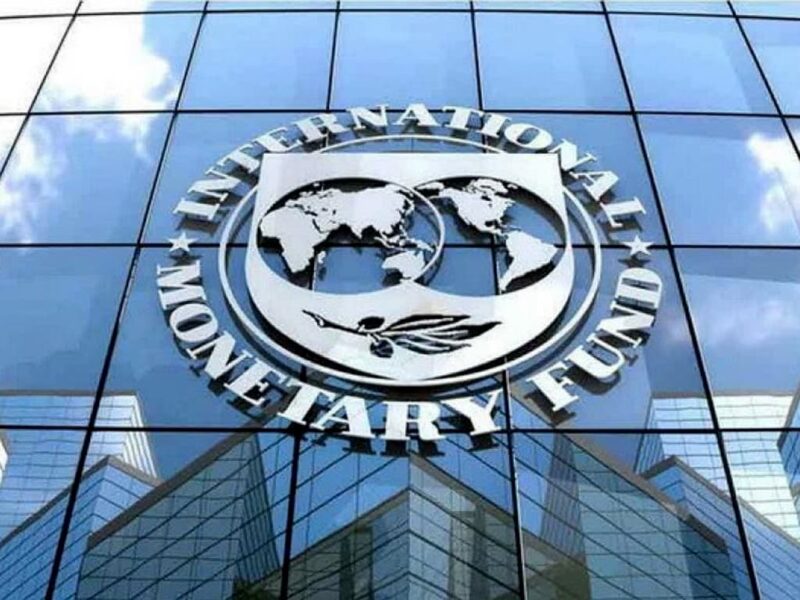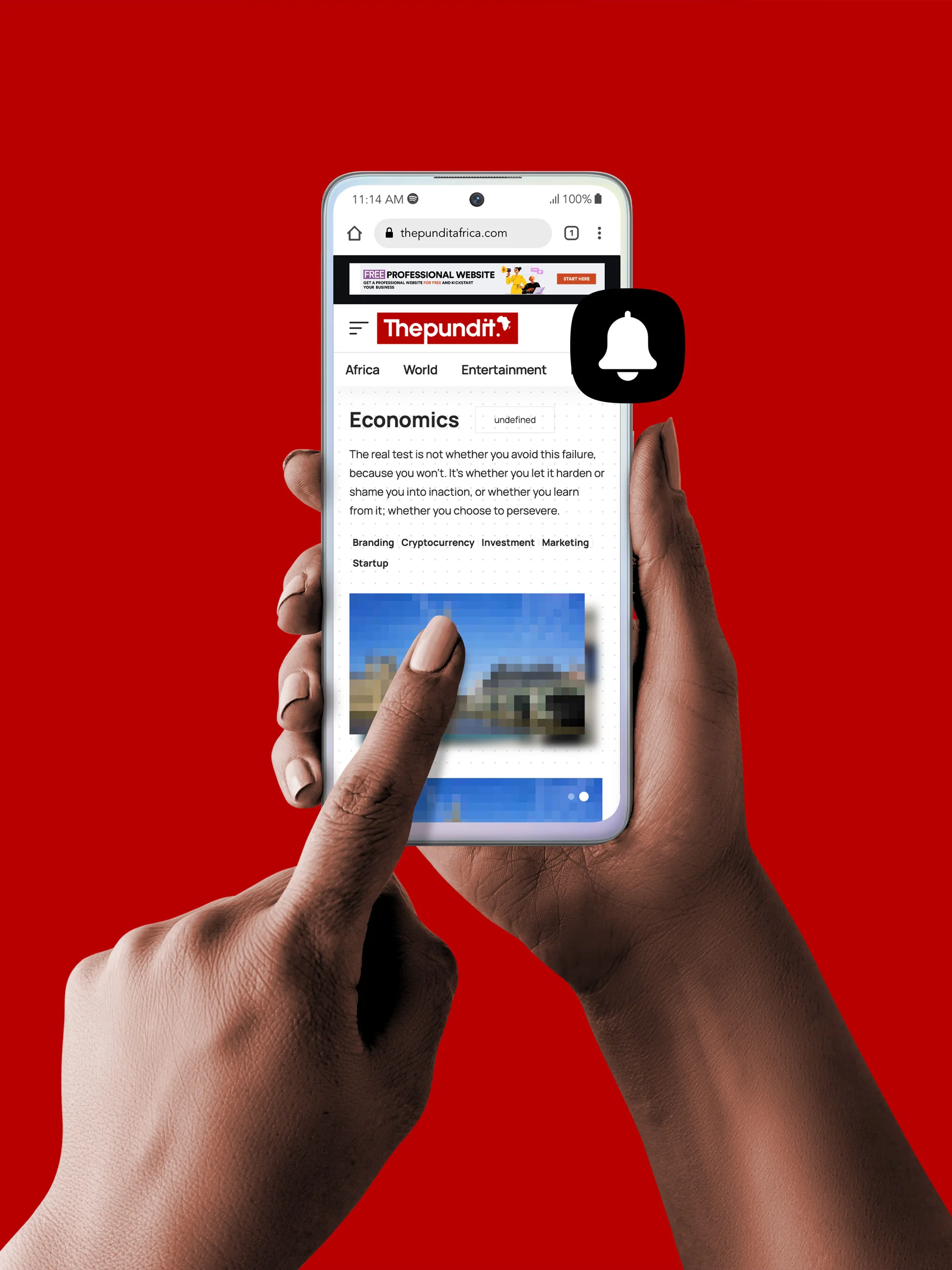South Africa, the world’s largest producer of the metal until it lost the position in 2008, has all but dropped out of the big leagues today.
Of the different reasons often cited for Ghana’s feat, two stand out. First, the sheer amount of acreage converted to gold mining in the last few decades (remember that nearly 24% of the country’s landmass bears gold ores); and, second, the rapid surge of small, informal, and artisanal producers. Nearly 90% of new mining activity in recent years has been driven by this group of producers.
To understand the full impact of small-scale mining in Ghana’s gold sector, it helps to remember that between 1960 and 1972, Ghana was always in the top four or five producers in the world until a series of botched nationalisations saw the country drop out of the top five. Even so, Ghana will remain on the top ten list until 1978. The country’s return to the big leagues was greatly helped by the legalisation of small-scale and artisanal mining in the late 1980s. By 1991, small-scale and artisanal miners controlled 5% of national production. Three decades on, their share stands at 35%. A dramatic illustration of the diverging trends between Ghana and South Africa is to be found in data showing that there are 200 times more women engaged in small-scale and artisanal mining in Ghana than in South Africa.
While Ghana owes much of its return to the top ten list of global gold producers to the role of small-scale and artisanal miners and their relentless conversion of the country’s gold-bearing landmass to mining, elite opinion has soured against their conduct in recent times due to mounting environmental and, in a secondary sense, security problems.
One can simplify the situation as follows:
- Underinvestment in new sophisticated technologies, techniques, and capabilities, key factors in stimulating mining output, in the 1970s, caused Ghana’s elimination from the top gold production ranks. Said underinvestment was caused by a poorly thought-through nationalisation strategy, which was in itself a response to a woeful lack of meaningful Ghanaian presence in the sector (until nationalisation commenced in the 1960s, 90% of mine ownership was in the hands of foreigners).
- The growth of small-scale mining in the 1990s was turbocharged by the influx of Chinese hand-me-down technologies in the 2000s leading to both an expansion of output and the accompanying environmental calamity. The sunny side of the Chinese capital and technological intervention, perhaps, is the growing presence of the Ghanaian private sector in the gold industry and the return of Ghana as a significant global player.
Analysing this history, what strategic challenge should a policymaker frame? The new NDC-led government of Ghana has concluded that multiple strands of the challenge can be addressed with a new form of nationalisation, one that focuses on the trading, marketing, and logistics segment of the value chain and on the small-scale sector in particular as opposed to the emphasis on the ownership of large-scale mines in the 1960s and 1970s.
Leading the charge for the new government is the Gold Board (GoldBod), an under-construction state-owned enterprise to be charged with the responsibility of upgrading the sophistication of the small-scale gold sector and with control of the sector’s entire value chain, from domestic trading to export infrastructure.
Working with a 60-day timeline that analysts like this author have described as arbitrary and rushed, the government has already submitted a draft law to Parliament for ratification. The law will collapse the existing state-owned precious minerals marketing corporation (PMMC), absorb its functions into the Gold Board, and add on certain roles currently performed by the Minerals Commission, a regulatory agency, thereby mimicking Cocobod, the state-owned corporation established in 1947 with an identical mission in the cocoa sector.
The policy intent in setting up the new entity is to eliminate gold smuggling and illegal trading claimed to be depriving the country of 70% to 80% of the small-scale gold sector’s proceeds. Furthermore, considerable investment shall be made into the sector to upgrade capacity, output, and compliance.
To properly discuss a policy move as momentous as the Gold Board, a country deserves a detailed policy document covering all key elements of the proposal, strategy, and political economy justifications. Unfortunately, such a document has not been forthcoming. Instead, the focus has been on aligning stakeholders around the legal text in the draft law.
One has to concede, nevertheless, that compared to the previous government, the current administration has made a far greater effort at consultation, generally speaking, and with particular regard to the whole Gold Board business. Early versions of draft provisions in the proposed law have been circulating in Accra’s policy circles for a while now and the Chief Executive in-waiting of the Gold Board has shown a willingness to dialogue with critics and engage the public at large.
Still, the haste with which the whole affair is proceeding raises serious concerns. In the absence of sufficient information about the exact operational mechanics of the proposed entity, this brief essay will limit itself to the draft law as presented to Parliament; what can be deduced from the draft to shed light on the upcoming entity’s operational plans; and on comments that the Gold Board’s incoming leadership has made in the press so far.
Putting GoldBod under the spotlight
1. The decision to mix regulatory (including granting GoldBod its own security force in the form of “inspectors” with search and detain/seizure powers), business development, sectoral transformation, and trading functions in a single organisation as set out in the draft Gold Board law is rather curious.

In recent years, a certain technocratic consensus has developed against this practice leading to the creation of standalone regulatory agencies to oversee matters once bundled with commercial activities within the mandate of certain state institutions and state-owned enterprises.
In this regard, one can cite the cases of the Petroleum Commission and the Ghana National Petroleum Corporation (GNPC); the National Pensions Regulatory Authority (NPRA) and the Social Security & National Insurance Trust (SSNIT); and other such instances of regulatory functions being squeezed out of super-parastatals into a standalone, dedicated, purely regulatory agency.
In fact, elite commentators like to cite the continued bundling of Cocobod’s commercial and regulatory objectives as an anomaly, one that was allowed to persist despite the push in the late 1980s across Africa to unbundle national commodity monopolies (see the case of coffee in Uganda). There may well be sound reasons for going against the grain in the case of gold but none have so far been provided.
2. The government’s concern, as expressed in the memorandum to the draft law submitted to the Ghanaian parliament, appears to be what it calls “fragmentation” in the regulatory architecture.

How and why “fragmentation” per se is the problem is not explained. The charge of fragmentation appears to be explained merely by the fact that different entities undertake activities that somehow touch the gold sector. The general understanding though has always been that the Minerals Commission currently oversees all regulatory matters in the gold mining sector and by law ought to be responsible for licensing while the PMMC focuses on its specialised technical competences in the areas of assaying and testing, as well as its own trading, processing and related commercial activities. An objective analyst might thus view the split of functions as coherent and purposeful rather than fragmenting.
2. Even if the government has compelling reasons in its bid to create a combined regulator-trader in the gold sector, a super-parastatal in other words, the causes for concern about such hybrids remain and would need to be addressed in the entity’s structure. The draft law’s approach is to create tribunals and dispute resolution committees (DRCs) to provide aggrieved industry players with an avenue for redress. Unfortunately, the current provisions render the independence of these bodies somewhat suspect. The DRC is to be appointed by the same Board of Directors whose decisions industry players may find injurious.

The appellate mechanism if one is unsatisfied with a determination by the DRC is a tribunal to be set up on ad hoc basis on the authority of the Minister responsible for the sector. The tribunal’s rules of procedure are, however, to be determined by the Board of Directors of the same Gold Board whose actions may have injured the complaining parties.
No doubt this entire arrangement borrows profusely from recent practices, such as for instance the setup of the Electronic Communications Tribunal (ECT) in the telecommunications sector. But, at least, in the case of the ECT, the tribunal composition has been delegated to the relatively neutral Chair of the Public Services Commission rather than the Board of Directors of the National Communications Authority (NCA), against whose decisions complainants may appeal to the ECT. This is so despite the fact that the NCA, unlike the Gold Board, does not have commercial interests that may conflict with those of industry complainants.

It would be helpful to understand why even the pretence of impartiality and independence in respect of adjudicatory bodies created to scrutinise the Gold Board’s (GoldBod’s) actions has been dispensed with in the draft law.
3. The legislative surgery used to create the regulatory-commercial hybrid of the GoldBod is itself suspect. It starts with the repeal of the Kimberley Process requirement in section 6 and 97 of the Minerals & Mining Act (Act 703). It is then stipulated in a consequential amendment (section 78 of the draft law) that the reference to the “Minister” in the Kimberley Process Certificate Act (Act 652 of 2003) must now be read to mean a reference to the Gold Board.
On a surface reading, something simple and benign has happened. The current law makes the Minister of Mines responsible for issuing certificates attesting that diamonds being exported from Ghana did not originate in conflict or other undesirable zones. In practice, however, he has normally delegated this function to the PMMC, which thus serves as the Kimberley Process Authority in Ghana. The draft Gold Board law hence merely streamlines the procedure by making the Gold Board the ultimate authority without the ministerial veneer.
The problem with this arrangement is that in inheriting the PMMC’s trading functions along with regulatory schemes such as Kimberley, Ghana is sustaining a conflict of interest whereby a trading entity purports to certify its own supply chain. In most countries worldwide, the Kimberley Process Authority tends to be a pure governmental entity such as the Diamond Office in the Ministry of Mines in Botswana or the Namibia Exporting Authority. No surprises then that Ghanaian Kimberley certificates routinely get flagged and that Ghana was one of the first countries to be put on probation at the Plenary Meeting of the Kimberley Process as far back as 2007. Rather than consolidate the conflicts of interest inherent in the regulatory-commercial structure, shouldn’t the country consider a different path forward to bolster independent certification of its precious minerals supply chains?
4. The legislative surgery veered into even more contentious cavities. Sections 6, 97, and 104 of the Mining Law (Act 703) are to be repealed in their entirety. A close reading would show that the goal is to hollow out the licensing functions of the Minerals Commission and transfer them wholesale to the new Gold Board, presumably with a mass transfer of the public servants there who specialise in licensing-related due diligence to the Gold Board.



The problem here is that those sections cover all minerals whilst the mandate of the Gold Board has been specifically restricted to precious minerals. Parliament needs to scrutinise this arrangement carefully as it implies the total emasculation of the Minerals Commission to perform certain critical functions in relation to non-precious minerals.
One wonders why, instead of this blunt cross-revocation approach, the decision wasn’t made to amend Act 703 instead to remove precious minerals from the purview of the Minerals Commission. With the country aggressively promoting investment into green and industrial minerals, for instance, it would be problematic to disable the primary agency responsible for those sectors in a hurried effort to bolster a new kid on the block.
5. Besides the untidiness of the regulatory-commercial combo model, there is also the concern of saddling the Gold Board with certain specialised roles of a highly risky nature. The most critical such role on this list is the sector-financing mandate.

In effect, the Gold Board is expected to become a massive Fund Manager in the mining sector, originating and assessing credit opportunities; structuring lending and, perhaps, equity transactions; and handling all the risk and compliance monitoring that comes with these roles. We have been told in recent weeks that such investing activities have landed the Minerals Income Investment Fund (MIIF), which is supposed to have experts in such areas, in serious losses. Without being provided any details and informed as to how the government intends to prevent the reoccurrence of such problems going forward, the burden has simply been shifted to a greenhorn operator by name of the Gold Board.
It is absolutely critical that an operational manual be developed and presented as part of supplementary material to Parliament.
Such a manual should cover all the specialised functions expected to be managed by the Gold Board, which might entail serious operational and financial risk. In particular, the credit origination and assessment standards and procedures that will be applied in seeking to finance small-scale mining companies must attain the sophistication level of a tier one commercial bank in Ghana, and the corresponding personnel and infrastructure must be available before the GoldBod is permitted to commence operations.
6. The GoldBod’s own ability to borrow would also require elaborate guidelines. Its power to design and execute forwards, hedges, collateralisation, securitisation, and a host of financial transactions to finance its trading, logistical, lending, and sector-development functions should be carefully circumscribed by regulations. The said regulations must be presented in draft form for the benefit of the current committees tasked to review the primary GoldBod draft law to shed more light on the adequacy of relevant provisions.
I freely admit that this country has more often than desired passed various laws to set up institutions without proceeding to pass their operational regulations soon thereafter. Sometimes, years have elapsed before such regulations come into operation. Take the disability laws, for instance. The disability policy was created in 2000. It was, however not enforced with the excuse that it had no legal backing. Thus, in 2006, an Act was passed by Parliament. The statute was also, however, not enforced due to a lack of regulations. Meanwhile, the government was busily ratifying all manner of international treaties on the disability subject. Eventually, the law was declared outmoded and a draft amendment bill is now expected to be passed this year. In the 20 years that the law has been theoretically operational, no regulations have ever been passed. I argue that it is precisely because of this legislative culture in Ghana that, considering the degree of risk involved in the GoldBod’s operations, the draft law should not be passed without the concurrent provision to lawmakers of draft regulations. The amounts of money being talked about strongly suggest that the nation cannot afford to brook such laxity.
7. Among the reasons why an operational manual is critical in determining the adequacy of the provisions in the draft law is the haziness of the proposed business model of the GoldBod. From what the country has been told so far, the GoldBod’s primary commercial logic is as a physical gold, or bullion, trader. It will license aggregators to work with small-scale miners across the country to mobilise large volumes of raw gold (so-called “dore gold” that, typically, has pure gold content of between 50% to 80% after crude refining at the small-mine level). Aggregators will then confirm the level of gold purity and pay producers accordingly. GoldBod will validate this purity through its own testing before paying aggregators. It will then arrange for further refining according to the terms of the deals it cuts with brokers.
In recent commentary, the upcoming CEO of the GoldBod has suggested that it will try and refine purchased gold in local refineries to a purity range (between 95% and 99%) that should enhance export trading, in Ghanaian refineries. GoldBod would then sell onwards to brokers, take their money, and recycle it back into trading, logistics, assaying/testing, etc, and, of course, overheads.
Even a junior high student can easily see so many points at which this model could break. Without tight rules and procedures, Cocobod-scale debts could easily be created. Critically, the final margins along this complex chain of commercial activities must cover the GoldBod’s cost of capital. Here are a number of specific matters that Parliament must endeavour to obtain clear and cogent written assurances on.
A. There are reports that about ten aggregators are already being identified and primed to play the apex role in the new framework. The operational manual must detail the exact due diligence framework for selecting aggregators. The regulations should be super-clear as to what standards an applicant for an aggregator license must meet to qualify for and retain such a license.
B. In the same manner that in the capital markets, the Ghana Fixed Income Market authorities publish the trading volume of licensed dealers in government securities, there should be total transparency about the trading volumes of these entities and their purchasing history, including the specific small scale mines from which they aggregate their gold holdings.
C. The government must explain how it will settle on refineries to participate in the aggregation scheme. In the absence of global certification, the Standards Authority and private certification specialists must be invited to work together to bolster the local certification schemes for all eligible refineries. These details must be specified in the operational manual and referenced in the regulations. The government must also tell us about the status of the shady, partially state-owned gold refinery.
D. As a physical gold dealer of globally-uncertified gold (i.e. gold lacking LMBA or COMEX certification) operating in the over-the-counter markets, considerable variability and volatility in trading returns are all but guaranteed. A fascinating case study is that of Primera Gold in the Democratic Republic of Congo (DRC). Primera entered into a kind of joint venture with the DRC to do exactly what GoldBod aims to do in Ghana. In the end, the model didn’t work out. Even though Primera configured its sourcing, refining and trading setup such that it could sell its gold for as high as ~$64,500 per kilogram (whilst competitors like Kibali Gold were fetching as low as ~$46,200 per kilogram), the model could still not be sustained.
Apart from the usual policy dysfunction and public-private-partnership (PPP) challenges in the mining context of many countries, one main reason why aggregation like what GoldBod is attempting to do usually fails, as it did in the DRC case, is marginal efficiency. Informal buyers and dealers have low costs because they can cut corners and sell at lower prices to international brokers. Competing with them on both ends of the chain can be extremely tough. Extraordinary skill is required to time when to buy and when to sell. Any misstep would lead to losses. The specific trading strategy for the GoldBod would always be partially confidential. However, its loss-prevention strategy must be properly documented. The government must fully disclose the results of the recent trading experience of the Minerals Income Investment Fund (MIIF) and account for the reported losses. It should then clearly explain to us, through parliament and the press, how the GoldBod expects to avoid such losses.
8. In light of the discussion above, it is safe to say that the GoldBod’s promise to invest over $250 million at fixed weekly intervals into sourcing and trading gold is hopelessly naive. It seems bereft of commercial instinct and insight. The whole point of gold trading is effective timing and volume management. Knowing when to buy at the best price and sell at the best price and using the right set of hedging and simple derivative instruments to smooth the inevitable bumps, is what makes commodity trading so edgy and skill-demanding.
A trading strategy based on feeding some trading channel with fixed amounts of gold at fixed intervals is likely to be massively exploited by more skillful counterparties. At any rate, there are significant variabilities across all the activities discussed above that will ensure that such a robotic revolving working capital model would be impossible to sustain. Loss periods would lead to ablated working capital requiring interim and bridge financing, which would take time to arrange, and shifts in market sentiment can lead to considerable variation in demand from counterparties, requiring the search for new channels, which all take time.
9. At any rate, finding over 3.1 tons every week (~160 tons a year) of gold in the small-scale sector and turning it all around within a week, as is being promised by the upcoming leadership of the GoldBod, is a fantastical proposition. It is important to emphasise that the government does not intend to force the large, corporate-owned mines to sell more than the current agreed quota to it. In any event, the production curve of the large mines is, at any rate, highly steady, at around 90 to 100 tons of gold. The small mines, the prime focus of the GoldBod, can barely sell more than 30 to 35 tons of gold per year. Increasing this volume by 5x, as the GoldBod’s proponents say they will do, would take a total miracle.
10. I am not deaf to the earnest claims of GoldBod proponents that large amounts of gold are being smuggled out of Ghana and that GoldBod shall stop all of the smuggling. The truth however is that putting a halt to the smuggling of a commodity so valuable that just a kilogram costs nearly $100,000 is a very tall order if economic incentives to smuggle exist. Countries like Japan, South Korea, and China, with vastly greater enforcement resources than Ghana, have fought a losing battle against gold smuggling for decades. So long as GoldBod’s costs shall always be higher than informal and criminal aggregators, these actors shall succeed in buying some gold from some small-scale miners willing to take the risk for a higher margin.
11. At any rate, the most lavish estimate of the amount of gold being smuggled out of Ghana suggests that the figure is about 1.2 tons per week valued at $1.2 billion per year. This figure assumes that all the gold leaving through such clandestine means is of the 24-carat grade, which is highly unlikely. But even admitting this figure as true only gives you $24 million a week as the amount the GoldBod could conceivably mop up. The truth, however,is that there has been no accounting as to how much of this amount emanates from illegal small-scale mining, i.e. galamsey. The government cannot risk the reputation of GoldBod by cornering galamsey gold. In short, far more realistic financial projections are required for GoldBod than have been forthcoming so far, considering that its predecessor, the PMMC, could hardly generate $3 million per year in trading value. On top of that, despite its small trading book, PMMC consistently wallowed in debts.
12. The central government has pledged to capitalise the GoldBod with $279 million. So far, the government has refused to disclose the financial terms of this transaction. The interest rate, grace period, and duration/tenor of the facility have not been revealed.
The nature of budget execution is such that funds are released in tranches, which is yet another reason why the $250 million in trading value per week figure is completely unrealistic. It is important to bear in mind that the predecessor of the GoldBod, the PMMC, had only a tiny sliver of the infrastructure in place to handle aggregation. So much so that when the Bank of Ghana (BoG) initially tried to rely on it to mobilise gold for forex, oil, and other objectives it didn’t work out and the BoG had to look elsewhere.
The sheer scale of the bureaucracy, security arrangements, and antifraud mechanisms, that would have to be implemented to safeguard against both physical losses (buying agents colluding with testing officers to underdeclare or overdeclare both gold and cash imprest etc.) and financial losses would entail the spending of millions of dollars by the remnants of an organisation that lacks the track record and capacity for operating at the proposed scale.
Controls within the government will thus slow disbursements to GoldBod as it seeks to comply with elaborate rules for drawing on government’s funds, meeting procurement rules, and complying with the audit and control regimes. It would be wise to set expectations carefully in order not to blow up the organisation’s credibility with counterparties before it has even consolidated its brand.
13. Failure to jealously guard the reputation of the GoldBod by setting realistic volume targets and by phasing in the transition would be catastrophic. The current proposed transition plan is to abruptly eliminate the existing trading networks comprising of dozens of licensees offering multiple services and to replace it in one go with a highly restrictive licensing regime limiting players to narrow functions (e.g. forcing companies to obtain separate licenses for trading, storage, transport etc.)


This approach, unless modified, would naturally lead to small-scale gold producers avoiding the GoldBod like a plague. As rational business people, small-scale gold producers shall anticipate performance failures and delays in payment etc. and slow sales to the GoldBod until confidence is restored.
Note that under the draft law, even artisanal goldsmiths would now be operating illegally if they fail to obtain a license from GoldBod.


It is however not clear if dentists who work with gold fillings, and the use of gold in various implants and goldleaf in design contexts, including in integrated circuitry, would now also be covered by the licensing regime, especially under section 26(3)(b) of the law.
14. Anticipating the challenge of producer discomfort with the new regime, the draft GoldBod law seeks to outlaw “hoarding”, thereby, presumably, eliminating an instrument that small-scale miners might wield as a negotiation tool. Unfortunately, the provision is badly drafted and would thus be either unenforceable or repressive. Gold is a perfectly legitimate asset to hold as a store of value. Differentiating among gold storage for long-term investment purposes, sensible commercial physical-hedges, and “hoarding”, a non-technical term, is likely to lead to abuses of discretion by the GoldBod.
15. Another power GoldBod wants to be given, under section 39 of the draft law, is the discretion to approve or reject mergers and acquisitions in the industry across all segments of the value chain. So, if one runs a gold bullion van entity and wants to buy another small entity with a warehousing chain, GoldBod has to approve. GoldBod thus wants powers normally reserved to securities, specialised technical, financial, and antitrust regulators. Quite apart from needing to build the requisite competence from scratch to mount these intrusive inquiries into the effects of prospective mergers and acquisitions, the absence of detailed regulations on the criteria to be adopted for evaluating the propriety of commercial transactions would most likely lead to serious arbitrariness and confusion, and may well limit investment into the sector.
16. Another curious provision is the decision to exempt the GoldBod from taxes even though its predecessor, PMMC, did pay tax. There is nothing in the Finance Minister’s memorandum explaining this decision.
17. As a physical gold/bullion trader, GoldBod shall not be operating in highly standardised exchanges (such as those for gold futures). Its contracts of a derivative nature would thus lack the liquidity inherent in an exchange setting. Where it is likely to lose money on certain open positions due to sudden shifts in gold pricing and other unfavourable market swings (even in the spot market), its bankers would need to step in with margin finance and other measures. Unfortunately, no consortium of banks has been approached to design any such backstops. The central government is assumed to be providing open-ended, standing guarantees to support this wild march into the unknown. A formal memorandum of understanding (MOU) between whichever unit of the government (finance ministry?) shall be acting as the spine for this greenhorn state trader is necessary. And a draft of that MOU is required by the parliament of Ghana to assess adequacy in relation to the scope of operating commitments anticipated in the draft GoldBod law. The maximal extent of leverage allowed in any such margin-financed trading positions must be specified in the operational manual and referenced in the regulations.
18. Finally, whilst I want to express some appreciation for the new spirit of consultation being exhibited by this government in general, and the upcoming leadership of the GoldBod in particular, there is still a tendency to omit critical information about the baseline against which new measures are being proposed.
Before the government can create a viable improvement over PMMC, MIIF’s gold sector investment function, Bank of Ghana’s gold desk, Mineral Commission’s licensing role, and all the other cross-government undertakings that have been cleaved and welded together to give GoldBod a mandate, a proper government position paper is needed. It must describe to a satisfactory detail what the challenges, gaps, and weaknesses have been and how the GoldBod, through its draft operational manual, seeks to transcend them.
In my modest view, such would be the minimal requirement for sound consultations with the civil society sector.
DISCLAIMER: The Views, Comments, Opinions, Contributions and Statements made by Readers and Contributors on this platform do not necessarily represent the views or policy of Multimedia Group Limited.





















